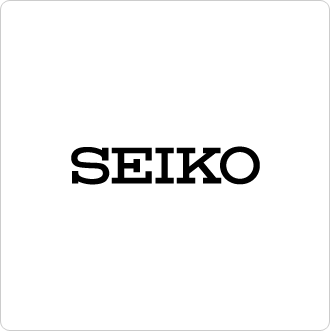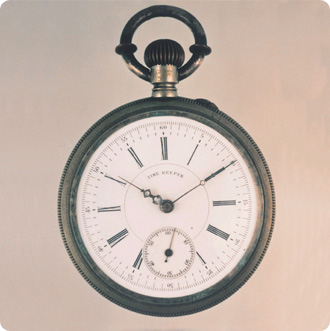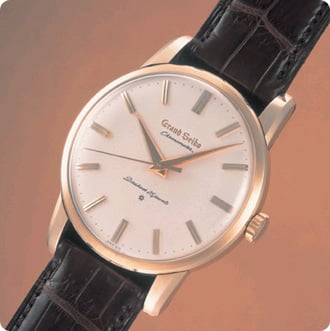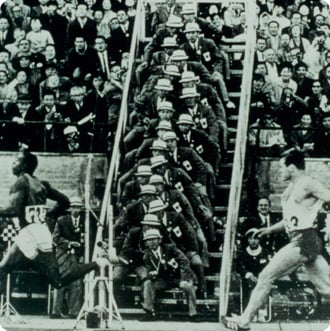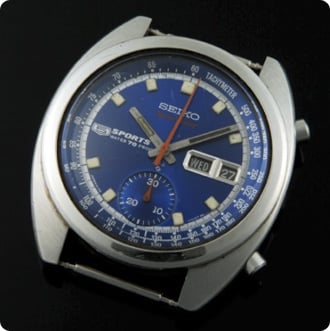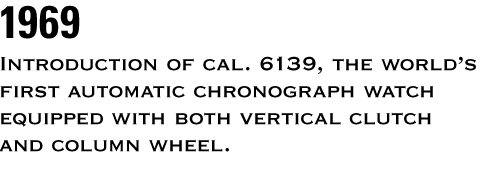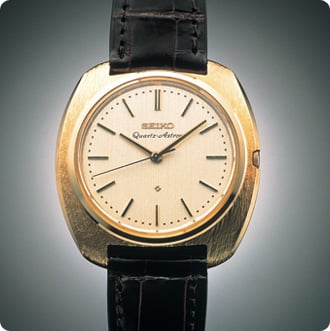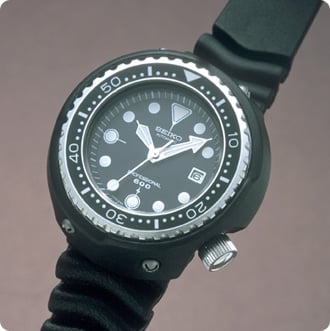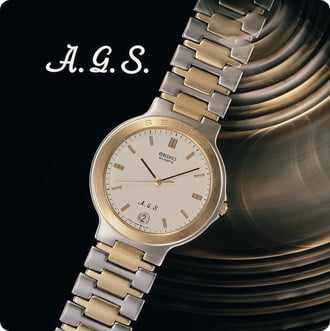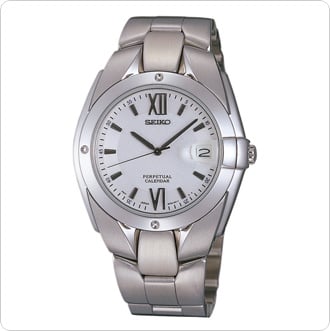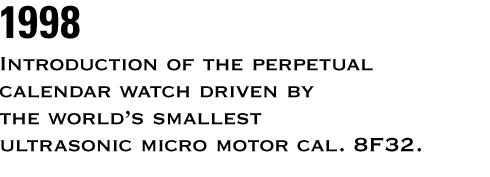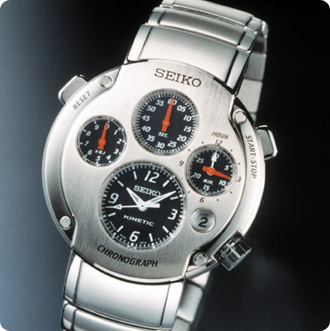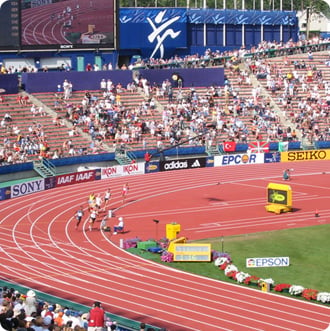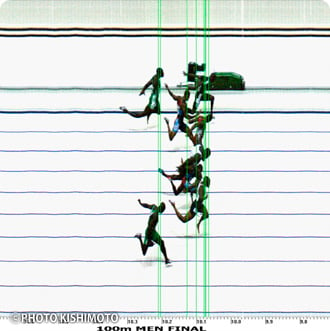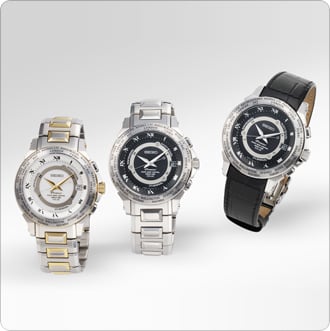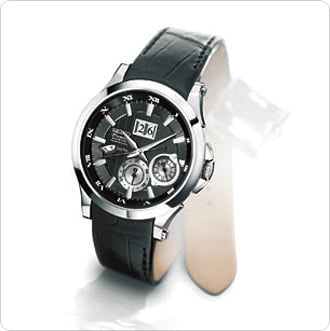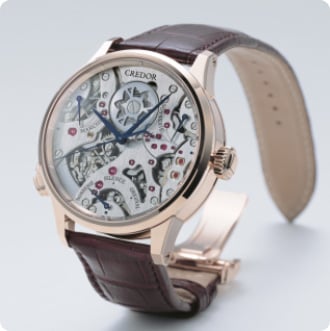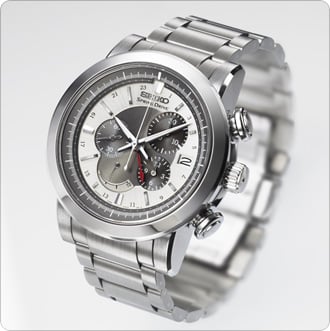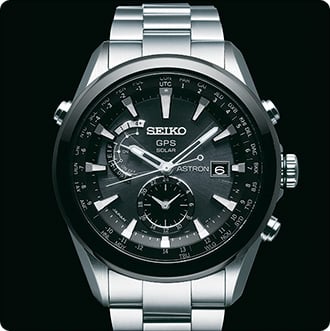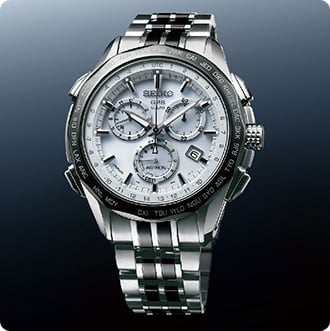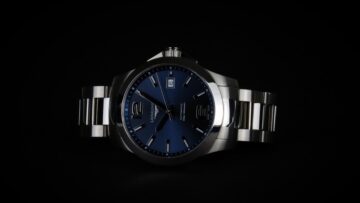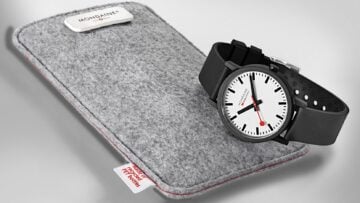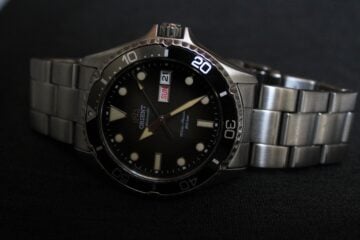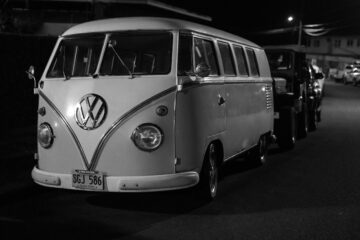Seiko Watches Timeline
The story of Seiko Watches began in 1881, when a 22 year old entrepreneur, Kintaro Hattori, opened a shop selling and repairing watches and clocks in central Tokyo. Just eleven years later, in 1892, he established the ‘Seikosha’ factory.
Throughout the 1890’s, the success of Seikosha’s wall clock business increased, and Kintaro looked to broaden the range of his business. In 1895, he created a pocket watch, the Timekeeper. It was a vital step forward, without which the future of Seiko would have been very different as it paved the way for Japan’s first ever wrist watch.
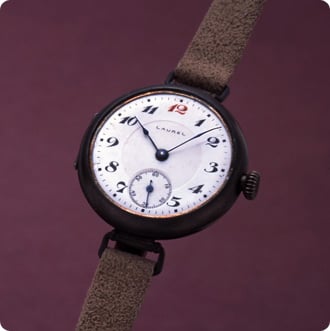

In the beginning of the Taisho Era, pocket watches were still very popular and there were only a few wristwatches imported to Japan. Kintaro, however, was determined to be ‘one step ahead’ and embarked on the arduous task of creating Japan’s first ever wristwatch. In 1913, he succeeded and the Laurel was produced. In the early days, the company was able to produce only 30 to 50 watches a day, but, for e first time, Kintaro had established a lead on the rest.
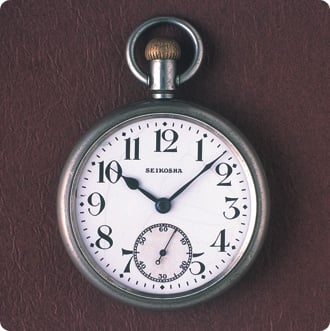

1929. As its railway network expanded, Japan National Railways appointed Seiko watches as its official supplier. Train drivers often made wooden cut-outs on their consoles where the approved pocket watch would sit in line of sight as they drove their trains.

On August 28, 1953, Japan entered the age of commercial television and aired its first TV advertisement. At precisely 7 pm, immediately following the hourly signal, Seiko watches became the very first TV advertiser. The station was Nihon TV, or NTV as it is now known, and the commercial promoted a Seiko alarm clock.
In fact the brand was Seiko-sha, the company’s original name. It means ‘The house of precision’.
In 1960, the first Grand Seiko model was produced. High in the mountains in Nagano prefecture in central Japan. A small team of Seiko’s most experienced and skilled watchmakers were entrusted with the task of making the very best watch of which they were capable. Grand Seiko watches was to represent the pinnacle of Seiko watches excellence in mechanical watchmaking and to deliver more accuracy, legibility and durability than any other watch.
The day the Tokyo Olympic games opened, Seiko watches was ready with 1,278 timing devices, all purpose built for the task. The stopwatches created for athletics were tested by Mr. Paulen, later President of the IAAF. After and hour of testing, two stopwatches registered less than 1/10 second of difference. Thanks to a new heart-shaped cam on the balance, a new level of accuracy had been achieved. Seiko had passed the test with flying colors.
As the world’s first automatic chronograph with a ‘magic lever’, column wheel and vertical clutch, this may have been the world’s first such timepiece, and it was a milestone in Seiko’s journey toward pre-eminence in chronograph technology.
The world’s first quartz watch, the Seiko watches Quartz Astron was introduced in Tokyo on December 25, 1969. It delivered unmatched performance. It was accurate to within 5 seconds per month, 100 times more accurate than any other watch, and it ran continuously for a year, or 250 times longer than most mechanical watches. The quartz revolution had begun.
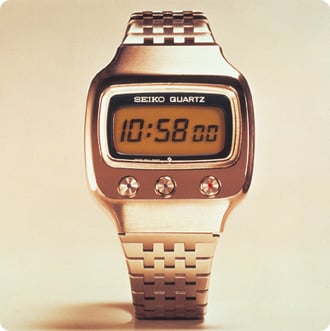

This fully-electronic watch used the world’s first six-digit liquid-crystal display to indicate the time. Capable of continuously displaying the hour, minutes and seconds on a field-effect liquid crystal display, this groundbreaking digital watch attracted wide attention when it was first marketed in October 1973. The internally developed LCD was long-lived (50,000 hours) and had good contrast. A lamp provided enough illumination to make the numbers on the display easy to read even in the dark.
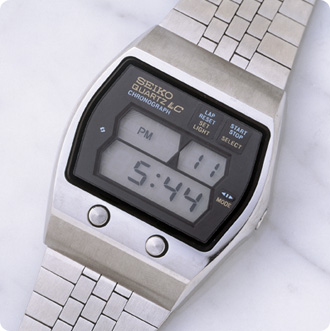

In 1975 Seiko watches launched the world’s first digital quartz watch with a chronograph, the 0634. It could record time to 1/10 of a second and had a lap time function. It also incorporated an internal light, so that it could be seen clearly in the dark. It became a huge hit and created the market for high-function digital watches.
One day in 1968, Seiko’s engineers received a letter from a professional diver from Hiroshima Prefecture. The letter shocked Seiko’s engineers with its vivid description of the stresses and strains put on a watch by professional saturation divers who dive to depths of 350 meters. Seiko watches took up the challenge. After seven years of research, the Professional Diver’s 600m, the world’s first diver’s watch with titanium case, was created. A gasket impervious to helium, legible at great depths and with a titanium case. It set a new standard for diver’s watches.
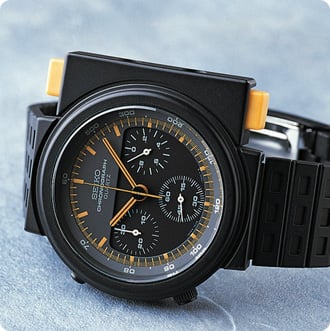

![]()
Seiko’s mastery of quartz technology and of mechanical chronograph watchmaking came together in the creation of the world’s first analog quartz chronograph. It measured elapsed time to 5/100 second and offered split time capability and a tachymeter. It was designed by the celebrated Italian car designer, Giorgetto Giugiaro.
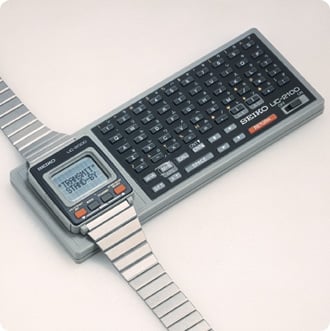

![]()
After introducing the world’s first TV watch, Seiko watches introduced a wrist computer that stored data. It was the first of its kind. It had memory of up to 2,000 characters and could store telephone numbers and addresses as well as a diary or schedule for up to one month. The Seiko wrist computer marked the beginning of the age of portable information devices.
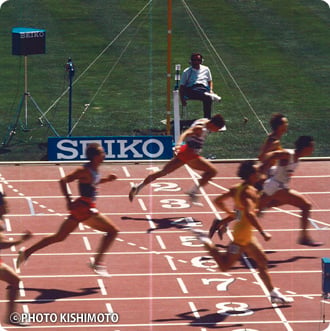

From the moment that the quartz watch was born, Seiko watches strove to create ‘no battery change’ technologies. In 1977, Seiko introduced the solar powered watch and, in 1986, a quartz watch with hand winding generating system. In 1988 came the big breakthrough; Seiko KINETIC, a watch with an oscillating weight that converted the wearer’s motion into electricity and thus powered the quartz movement.
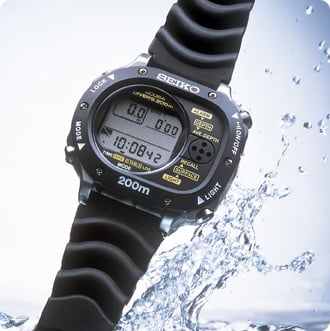
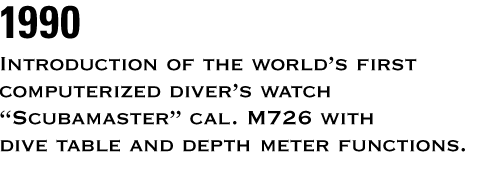
Seiko’s mastery of electronic watchmaking and long experience in diving watches allowed the creation of the SCUBA MASTER, that was equipped with a water sensor and depth sensor and that displayed diving time and depth, vital information for divers.
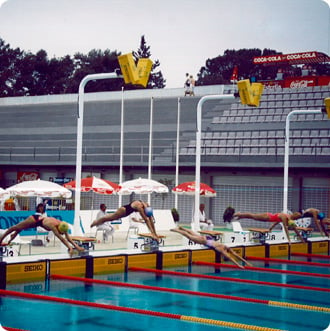

Seiko watcheswas selected to time the Olympic Games in Europe for the first time. A team of over 300 engineers and timing specialists served the event.
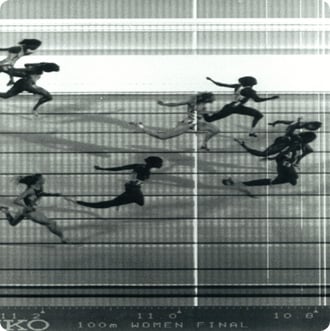

After creating the ‘no battery change’ technologies of Solar and Kinetic, Seiko’s development focused on watches that deliver the ultimate in user-friendly operation. The PERPETUAL CALENDAR watch has accuracy of 20 seconds per year, battery life of as long as 10 years, and a perpetual calendar correct up to February 28th, 2100. Its ultra-sonic motor delivered precise and immediate date change.
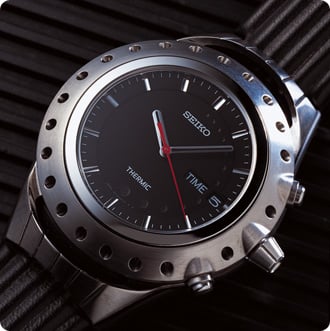

In 1998, Seiko watches introduced THERMIC that generates power using the difference of the temperature between the wrist and the atmosphere. It has power reserve of 10 months after full charge.
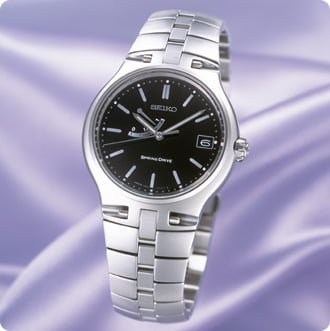

![]()
SPRING DRIVE is a technology unique to Seiko. The traditional escapement is replaced by a totally new regulator that delivers silent and smooth glide motion hands and accuracy of one second a day.
SEIKO’s successful KINETIC watch was equipped with stopwatch function in a very unique design. It is equipped with zero resetting function using heart shaped cam and special movement construction that avoids dusts.
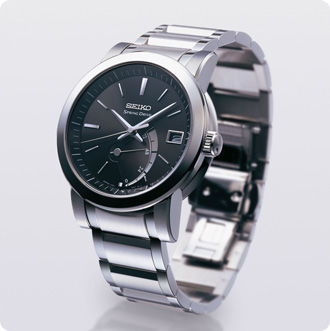

Powered by the motion of your body, it is the first watch to generate and save its own electricity. It goes to sleep when not worn and the hands return automatically to the correct time when put on again. The perpetual calendar will be correct until February 28, 2100.
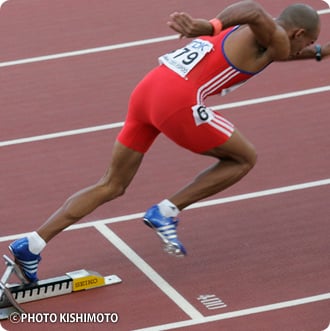

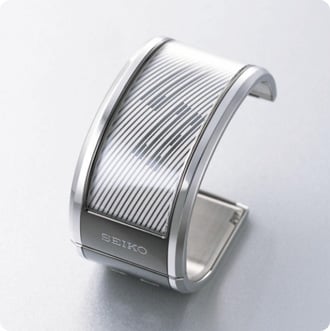

Using, for the first time in a watch, electronic ink technology, time or any other data is presented on a wide display area, with perfect legibility at any angle. Furthermore, the display allows the wearer to choose from many presentation graphics for the time, including a “day and night” background that shows, in a dazzlingly simple graphic style, AM and PM. This watch won the Grand Prix de Geneve.
Only Spring Drive presents the true natural and continuous flow of time, with no ‘tick’ as the hands move in perfect glide-motion. Only Spring Drive is so silent that time can be marked by the long, lingering chime of the Japanese Orin bell.
Thanks to its glide motion hands, only the Spring Drive Chronograph can measure elapsed time exactly, and not to the nearest fraction of a second. It redefines the accuracy of the spring-driven chronograph by offering one-second-a-day precision.
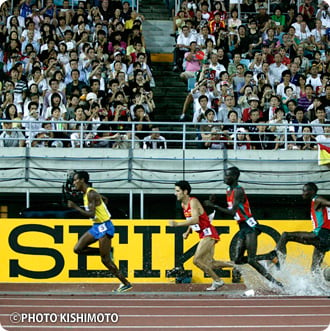

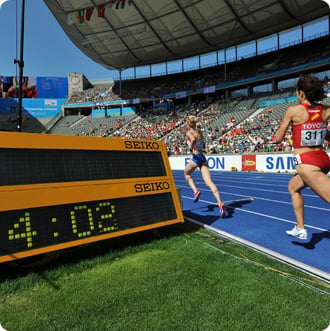

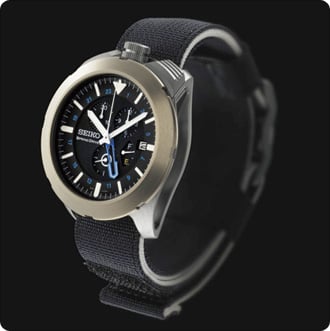

This watch was designed specifically for a spacewalk. Both inside and outside the International Space Station, it performed flawlessly in space. It won the sports watch award of Grand Prix d’Horlogerie de Genève.
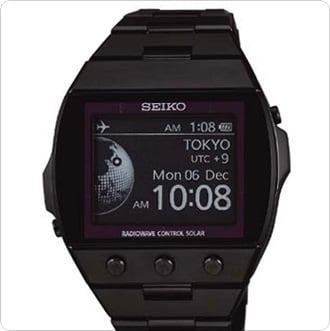

This new display system retains all the legibility benefits of Seiko’s first E-Ink watch, but allows for a much richer range of imagery and data to be displayed on the watch dial with 80,000 pixels, each capable of four different shades, delivering 300 dpi of display.
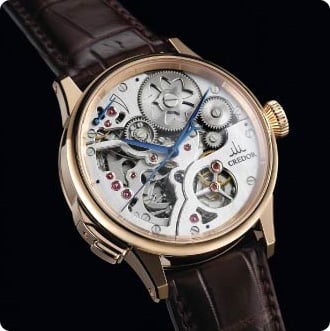

The beautiful lingering sound of the chime is created by the use of a special steel forged by a celebrated Japanese steelmaker, Munemichi Myochin. The purity of the sound is ensured by the magic of Seiko’s totally silent Spring Drive mechanism.
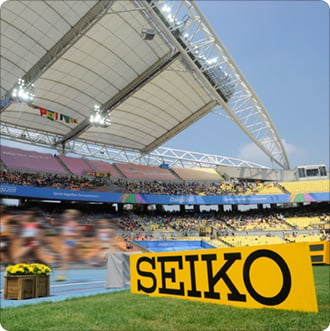

At last, the search for totally precise time, everywhere on the planet, is over. By developing our own, patented, low-energy-consumption GPS receiver, Seiko has been able to create a watch that can receive GPS signals and identify time zone, time and date data using the global network of GPS satellites. It recognizes all the 39 time zones on earth. This breakthrough timepiece is called Seiko Astron. Like its celebrated 1969 predecessor which was the world’s first quartz watch, the new Seiko Astron ushers in a new age of timekeeping technology.

When, in 1913, Seiko built its first wrist watch, the company’s president called it the Laurel. It was not only a first for Seiko, but also a first for Japan and it was the beginning of a tradition of innovation that resulted directly from Kintaro Hattori’s determination that Seiko would always be “one step ahead of the rest”. Movie shows Seiko’s historical timepieces.
![]()
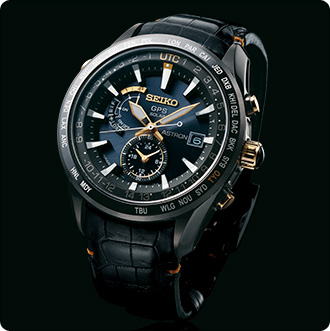

This very special edition commemorates 100 years of Seiko watchmaking and honors the memory of our founder Kintaro Hattori and his vision that Seiko should always be “One step ahead of the rest”. There could be no better testament to the enduring power of Kintaro’s vision than Astron, a watch of which we, his fortunate successors at Seiko, believe he would be proud. The case back also evokes the century old tradition of Seiko’s watchmaking, with the original “S” mark engraving.
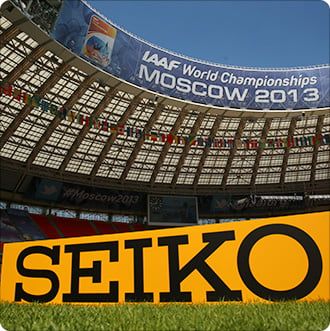

Astron GPS Solar has been an outstanding success since its launch in September 2012, with its huge global acceptance giving proof positive of the global demand for a watch that adjusts to time zones. The new Astron caliber offers four new features, designed to attract new consumers to the fast-growing world of Astron.
Seiko Astron GPS Solar Chronograph
- Chronograph: The new caliber offers a 6 hour chronograph whose operation could not be more simple.
- Smaller: The new case size is 30% smaller, and the watches’ dimensions (44.6mm x 13.3mm) are now the same as most mainstream multi-function watches. This new size, which opens out many new design possibilities, has been achieved by a new advance in Astron’s energy-saving technology which allows the watch to connect to the GPS network with a smaller antenna.
- Easier: The simple ‘one-touch’ operation of the GPS function has not changed; just press one button for six seconds and Astron’s GPS function is activated. However, the secondary functions (manual time zone selection etc) have been made more accessible and more intuitive thanks to the new electronic setting function of the crown.
- More colors: The classic Astron black dial is available in the new design, but new color dials are now possible, thanks to a new dial with extremely high light penetration capacity.
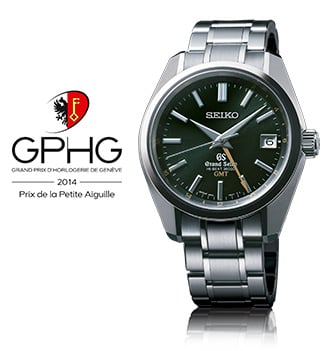

The watch that won the “Petite Aiguille” award was first revealed at Baselworld 2014. It is the Hi-beat 36000 GMT Limited Edition (SBGJ005). In both performance and appearance, it expresses the very best of Seiko’s mechanical watchmaking. The caliber has a high accuracy of +5 to -3 seconds a day and a power reserve of 55 hours. The GMT hand can be used as a dual time indicator with the hour hand being adjustable independently as the time of day hands continue to mark time. It is the perfect watch for the international traveler.

